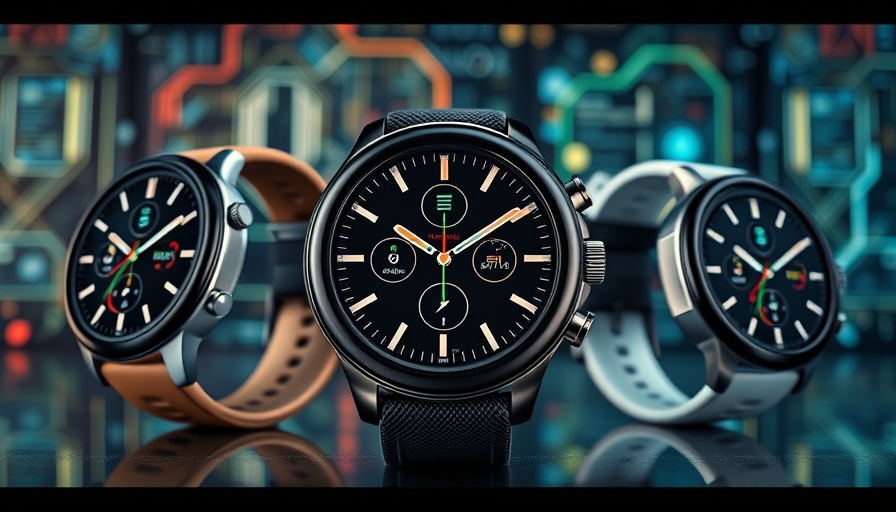
Revolutionizing Health: The Wearable Tech Landscape
Wearable technology has dramatically evolved over the past decade, shifting from basic step counters to sophisticated health monitoring devices. However, traditional adhesive-based monitors face significant limitations, such as the need for frequent replacement due to skin shedding and adhesive degradation. Recent research from the University of Arizona, published in Nature Communications, introduces a breakthrough in health monitoring technology: a longer-lasting, adhesive-free wearable that promises to transform how we track our physiological states.
Understanding the Breakthrough: A Closer Look at the New Wearable
At the core of this innovation is a 3D-printed wearable device designed not to rely on adhesives, which often compromise performance and data quality. This device, worn on the forearm like a cuff, continuously measures water vapor and skin emissions of gases, gathering valuable data on hydration, metabolic shifts, and stress levels.
According to Philipp Gutruf, co-author of the study, traditional wearables often capture only temporary snapshots of physiological data. In contrast, this new device allows for real-time monitoring without interrupting a user's routine, enabling the collection of nuanced biomarkers associated with various physiological states. This is a game-changer for industries, especially for athletes who require precise tracking of their performance to optimize training outcomes.
Why Continuity Matters: The Value of Real-Time Data
One of the major advantages of the new wearable is its ability to collect continuous data over several days without requiring a recharge or readjustment. This development addresses a significant pain point in the current wearable technology landscape—ensuring that users can maintain reliable data collection through daily activities and challenges.
Previously, tracking such intricate physiological responses while moving or participating in daily routines required bulky and stationary equipment. This device opens new opportunities for researchers and professionals aiming to gather rich data sets that reflect real-time health changes, thus providing deeper insights into a user’s health over time.
Implications for Health Monitoring: Practical Applications
The implications of this wearable device reach far beyond athletic training. It stands to benefit mental health monitoring and chronic disease management significantly. By capturing stress markers through skin gas emissions, the wearable could help in identifying early signs of metabolic disturbances, allowing for timely interventions and improved health outcomes.
Furthermore, organizations could leverage this technology to enhance employee wellness programs by integrating biometric data insights into health initiatives. Health professionals can personalize treatments based on a user’s unique physiological metrics collected by the device, making preventive healthcare more accessible and effective.
Future Trends: What Lies Ahead for Wearable Technology?
The researchers' plans to extend the range of detectable biomarkers raise exciting prospects for the future of health technology. Imagine wearables equipped with advanced analytics that not only record data but also provide tailored insights based on individual health markers, effectively acting as personal health assistants that promote better health decisions.
These advancements may spur a broader adoption of wearable technologies within workplace and home environments, emphasizing the proactive management of personal health. As the technology continues to improve, the value of real-time, actionable health insights will become increasingly recognized across sectors.
Counterarguments: The Skepticism Surrounding Wearable Tech
While the potential of adhesive-free wearables is promising, skepticism remains concerning data privacy and the accuracy of readings. As health data collection becomes more intricate and pervasive, consumers must prioritize devices that ensure the protection of sensitive information.
Furthermore, there are concerns about the accuracy of data generated. Continuous measurement of physiological responses poses challenges; for instance, varying environmental conditions can influence readings. Consumers and health professionals alike must navigate these issues to trust the technology fully.
Personalizing Your Health Journey: Actionable Insights
For those in business and tech-driven industries, adapting early to this technology could be advantageous. Explore partnerships with tech companies that specialize in the development of health wearables. Consider how integrating such technology could not only enhance your marketing portfolio but also contribute to societal benefits by prioritizing health and wellness.
As we pave the way for smarter health technologies, staying informed and investing in innovations that prioritize user experience and data precision can place industry leaders at the forefront of health transformation.
Staying ahead means embarking on this journey now, as our understanding of personal health continues to evolve through technology. Are you prepared to embrace the future of health monitoring?
 Add Row
Add Row  Add
Add 




Write A Comment